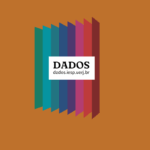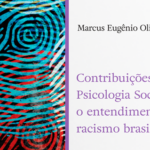Bianca Orrico Serrão, Investigator, University of Minho, Braga, Portugal.
Juliana Prates Santana, Professor, Federal University of Bahia, Salvador, Bahia, Brazil.
 The presence of children on social media has been a matter of debate and a lot of concern, due to the risks to which children are exposed, especially the younger ones. The risks arising from this hyper-exposure are indisputable and need to be the target of collective protection actions. In this sense, the article Children’s digital activism in times of a pandemic, published in the journal Educação & Sociedade (vol. 43), seeks to discuss the social participation of children in digital platforms, based on the presentation of the actions of children considered digital influencers around the world, specifically with regard to raising awareness and coping with COVID-19.
The presence of children on social media has been a matter of debate and a lot of concern, due to the risks to which children are exposed, especially the younger ones. The risks arising from this hyper-exposure are indisputable and need to be the target of collective protection actions. In this sense, the article Children’s digital activism in times of a pandemic, published in the journal Educação & Sociedade (vol. 43), seeks to discuss the social participation of children in digital platforms, based on the presentation of the actions of children considered digital influencers around the world, specifically with regard to raising awareness and coping with COVID-19.
The pandemic has brought numerous challenges and changes in modes of communication and social relationships, especially the need for social isolation and, in the case of children, the closing of schools. With this scenario, access to the Internet has become even more necessary, highlighting the digital divide present today, since 37% of the entire world population still does not have access to the Internet, according to the International Telecommunication Union (United Nations, 2021).
With the changes made so suddenly in daily habits and ways of life, children, who are not indifferent to their reality and to what has happened, sought through social media to share actions and reflections on what has happened, as well as strategies of mobilization to contribute to the prevention of the disease without leaving their homes. Even with significant changes in the conception of childhood in the West, especially from the contributions of the Sociology of Childhood, a view of the child as someone considered incapable and who must be protected from what is evaluated by adults as adequate prevails.
Qvortrup (2010) points out that sustaining this concept of keeping children away from economics and politics is unrealistic, since they must be part of a project to build the future. Sarmento (2005) reinforces this concept, adding factors related to class, gender, and culture, which socially oppress childhood, making it necessary to think from a critical perspective, articulating participatory investigations with actions promoted in the social structure. Children with wide visibility on social medias and considered digital influencers, occupied different spaces on the digital space to raise awareness about the containment of the virus.

Imagem: Tibor Janosi Mozes / Pixabay.
The research is the result of a study prepared for the doctoral thesis “Civic participation of children in online spaces: The occupation of social medias by children digital influencers”. As a result of the pandemic, the importance of investigating the actions of children during this period was evaluated, with data collected through digital ethnography, which allows analyzing “digital phenomena and the possibility of being understood in their own experiences” (FERRAZ, 2019, p. 54). The children presented in this investigation were followed through different platforms (Instagram, Twitter, TikTok and YouTube), and the selection of participants was designed so that, when adding a profile, the algorithm suggested others similar to children activists and influencers from different backgrounds and countries.
From the analysis carried out, it was possible to identify that the role of children on the Internet represents a great step towards the recognition of their participation in different social and political spheres, since there is still an invisibility of this social group regarding their political rights. The Internet has given visibility to minority groups that until then were not heard, such as children, allowing them to express their opinions and concerns on issues related to citizenship and politics, in addition to engaging in actions they consider relevant in an articulated way, obtaining greater enlargement of their voices through social media and accessing people who were disregarded in the agendas of social movements.
It is important to point out that the permanence of children on the Internet is a fact of reality and that there are many benefits in a way of life in which children and adults can share opinions, actions, forms of mobilization, ways of perceiving the world, etc. However, it is important to understand that this is a space that involves risks, including the appropriation of children’s cultural capital and influence by large corporations.
Children need to understand the risks they are subjected to, and for that, it is necessary to promote spaces for awareness and digital literacy, since many children can be the target of misinformation through digital platforms, in addition to offenses and violations in these spaces. It is suggested that further studies be carried out to broaden the discussion on the role of child activists, the impact on child participation in relevant and urgent social issues and how to protect them from possible risk situations when occupying these spaces.
References
FERRAZ, C.P. A etnografia digital e os fundamentos da Antropologia para estudos em redes on-line. Aurora: revista de arte, mídia e política [online]. 2019, vol. 12, no. 35, pp. 46-69 [viewed 25 October 2022]. https://doi.org/10.23925/v12n35_artigo3. Available from: https://revistas.pucsp.br/aurora/article/download/44648/pdf
NAÇÕES UNIDAS. Cerca de 2,9 bilhões de pessoas nunca usaram a internet por falta de acesso. ONU NEWS, 2021 [viewed 25 October 2022]. Available from: https://news.un.org/pt/story/2021/12/1772182
QVORTRUP, J. Infância e política. Cadernos de Pesquisa [online]. 2010, vol. 40, no. 141, pp. 777-792 [viewed 25 October 2022]. https://doi.org/10.1590/S0100-15742010000300006. Available from: https://www.scielo.br/j/cp/a/bqRcpxVHmtt6VzH7mvP6VHb/
SARMENTO, M.J. Gerações e alteridade: interrogações a partir da sociologia da infância. Educação & Sociedade [online]. 2005, vol. 26, no. 91, pp. 361-378 [viewed 25 October 2022] https://doi.org/10.1590/S0101-73302005000200003. Available from: https://www.scielo.br/j/es/a/3PLsn8PhMzxZJzvdDC3gdKz/
To read the article, access
SERRÃO, B.O. and SARMENTO, M.J., and SANTANA, J.P. Children’s digital activism in times of pandemic. Educação & Sociedade [online]. 2022, vol. 43, e257004 [viewed 25 October 2022]. https://doi.org/10.1590/ES.257004. Available from: https://www.scielo.br/j/es/a/s4nD8H6p8TfhSY9WxRtnHrJ/abstract/?lang=en
External links
Educação & Sociedade – Redes sociais: Facebook | Twitter | LinkedIn
Bianca Orrico Serrão – Lattes: http://lattes.cnpq.br/5140010057198294
Juliana Prates Santana – Lattes: http://lattes.cnpq.br/5039427427945450
Educação & Sociedade – ES: https://www.scielo.br/j/es/
Como citar este post [ISO 690/2010]:


















Recent Comments